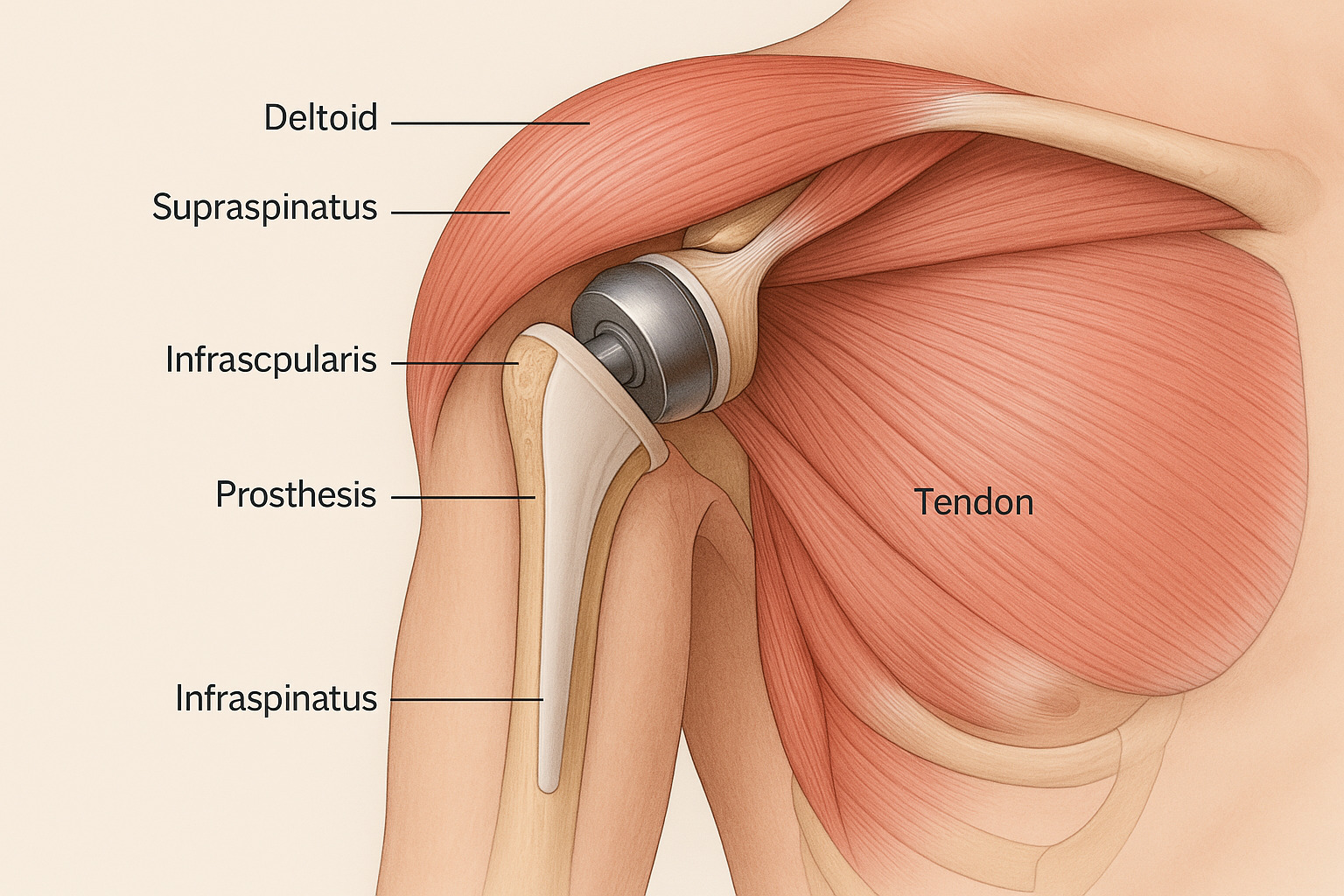Shoulder prosthesis
About
S houlder replacement is a surgical procedure in which the damaged shoulder joint is replaced with an artificial implant to improve functionality and reduce pain.
houlder replacement is a surgical procedure in which the damaged shoulder joint is replaced with an artificial implant to improve functionality and reduce pain.
Candidate
Candidates for shoulder replacement are typically individuals with severe shoulder joint damage caused by arthritis, injuries, or other conditions leading to significant mobility impairment and pain.
Preparation
Preparation for shoulder replacement involves thorough diagnostic assessment of the shoulder, usually through X-rays, MRI, or other diagnostic tests. The doctor will also consider the patient's overall medical history to ensure they are suitable candidates for the surgery.
Treatment
During shoulder replacement, the surgeon removes the damaged part of the joint and replaces it with an artificial implant designed to mimic the natural structure of the shoulder joint. The procedure involves the surgical placement of the prosthesis components, followed by a postoperative period of rehabilitation.
Result
After a successful shoulder replacement, patients often experience significant reduction in pain, improved mobility, and increased shoulder functionality. Recovery may take several weeks or months, but most patients notice a considerable improvement in their quality of life after rehabilitation.
Precautions
After the surgery, it is important to follow the doctor's instructions regarding postoperative care, rehabilitation, and activity limitations. Physical therapy, regular check-ups, and gradual return to normal activities can be crucial for a successful recovery after shoulder replacement.
ZagrebMed patient reviews
F.A.Q.
A shoulder prosthesis, also known as a shoulder replacement, is a surgical procedure in which the damaged parts of the shoulder joint are replaced with artificial components. It is used to relieve pain, restore function, and improve mobility in individuals with severe shoulder joint conditions.
A shoulder prosthesis may be recommended for individuals with conditions such as severe arthritis, rotator cuff tears with arthritis, or complex fractures that cannot be effectively treated through other conservative measures. It is typically considered when non-surgical treatments have failed to provide adequate relief.
There are different types of shoulder prostheses, including total shoulder replacement, partial shoulder replacement, and reverse shoulder replacement. Total shoulder replacement involves replacing both the ball and socket of the joint. Partial shoulder replacement replaces only the ball, and reverse shoulder replacement switches the position of the ball and socket.
The lifespan of a shoulder prosthesis can vary depending on factors such as the patient's age, activity level, and the type of prosthesis used. On average, a shoulder prosthesis can last around 15 to 20 years or longer with proper care and adherence to postoperative instructions.
Recovery from shoulder prosthesis surgery involves a period of immobilization, followed by physical therapy and rehabilitation exercises. The exact timeline and specific rehabilitation program will depend on the individual and our surgeon's recommendations. It may take several months to regain full strength and range of motion.
As with any surgery, there are potential risks and complications associated with shoulder prosthesis surgery. These can include infection, bleeding, blood clots, implant dislocation or loosening, nerve or blood vessel injury, stiffness, and adverse reactions to anaesthesia. Our surgeon will discuss these risks with you before the procedure.
In general, individuals who have undergone a shoulder prosthesis can resume light activities and low-impact sports after the recovery period. However, high-impact activities and contact sports may need to be avoided to prevent damage to the prosthesis. Our surgeon will provide specific guidelines based on your individual case.
Yes, in some cases, a shoulder prosthesis may need to be revised or replaced. This can occur due to wear and tear, loosening, infection, or other complications. Revision surgery may involve removing and replacing some or all of the components of the prosthesis.
Most shoulder prostheses are made of metal components, which can trigger metal detectors in airports or other security checkpoints. It is advisable to carry a medical device identification card or inform the security personnel about the presence of the prosthesis to avoid any inconvenience during screening.
The timeline for regaining a full range of motion after shoulder prosthesis surgery can vary depending on several factors, including the patient's age, overall health, and commitment to rehabilitation. In general, the initial focus is on managing pain and swelling while gradually working on passive and active range of motion exercises. It may take several weeks to months to regain significant motion, and complete recovery can take up to a year. It's important to follow the guidance of our surgeon and physical therapist, as consistent participation in rehabilitation exercises and appointments can greatly contribute to achieving an optimal range of motion.

Send an inquiry for the treatment
Start your way towards a successful treatment today. Fill out the form with your data, choose the service you need and we will connect you with the top medical experts in Zagreb.